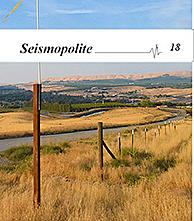Editorial: The art residency in context
The articles in issue 18 and 19 of Seismopolite shed light on some of the variation and recent developments in the art residency as a “site”, and give examples of residencies that explore experimental and critical potentials of this format. Within the global proliferation of the residency format there is also an obvious need to discuss the economy and politics of art residencies, in their local contexts, but also with respect to the working conditions of the artists themselves. In a critical essay Sebastjan Leban studies the precarisation of the artist as one crucial aspect of this worldwide spread of residencies, notwithstanding their many constructive sides involving networking, cultural competence, personal development etc.
Marnie Badham gives an account of the social history of art residencies in her article "The Social Life of Artist Residencies: working with people and places not your own“:
The recent unpredictable explosion of artist residencies has produced a range of social forms over the last century: shifting from what can be described as a more traditional institutional model of patronage with artists laboring on material works in isolated studios - to contemporary forms of social practice projects working collectively or by making art with local communities to explore contemporary global concerns. This shift from the individual to the collaborative and the private to the public in residencies extends the ‘social turn,’ which now permeates the contemporary art world.
Brazil is a country that has seen a rising number of residencies since the 1960s, and that also exemplifies their “social turn”, most notably perhaps the contrast between residencies that conform to the neoliberal modes of contemporary art production, and others that place themselves in opposition to this system, involving artists in direct engagement with political issues. The central question for Ines Linke and Tininha Lanos, in connection with three such cases taken from Brazil, is: How can one work in the context of adversity? In their article they discuss 1) the experience of Virginia Medeiros in the occupation of the Movimento Sem Teto do Centro (MSTC) at the Hotel Cambridge in São Paulo, 2) the video "the photographer" of Argentinian artist Nicolás Testoni, created during the Residence Sacatar, and 3) the artists' residence organized by Capacete, a Brazilian residency program, which even took part in Documenta 14 in Athens.
The residency No Lugar in Quito, Ecuador is “an in-situ laboratory in the city” that encourages a combination of artistic, curatorial and critical approaches to the conception of the territory. The idea is to sketch out “methodologies and conditions for artistic projects and researches” writes Byron…., in a way that dynamically resonates with, and critically reflects local issues and trajectories.
From the “opposite”, namely rural, setting, we also bring an interview exchange between artists Jon Henry, founder of Old Furnace Artist Residency (OFAR), a residency in Henry’s home in Harrisonburg, VA, and Peter Christenson, catalyst behind the Guest House Cultural Capital Residency (GHCC Res), a residency for cultural scholars in a student dormitory of Washington State University in Richland, WA. From the perspective of the “rural residency”, Christenson and Henry discuss central questions regarding local sustainability and awareness; hosting, hospitality and collaboration in residencies, among other things.
At the very moment when residencies become arenas for exchange, the question that immediately arises is of course: Exchange between which identities, what is the status of the objects and knowledge of exchange? Who/ which factors constitute this status; how, and for which/ whose purpose? In her essay Sehr Jalil expresses her concern about the purpose of certain residencies that are based on cultural and creative exchange. Can such residencies “ever be oblivious to the ‘origin’ of the artist?” she asks; “(…) can a residency blur the boundaries of origin or does it further darken the lines, henceforth are residencies silently proclaiming that art and ‘visual’ is dependent on origin? In the context of contemporary art from Pakistan, its surging popularity and inclusion in prestigious museums, collections and institutions around the world since the 1990s, the problem according to Jalil is that it carries with it a preconceived idea of origin that is still in line with the “orient” and the “occident”.









